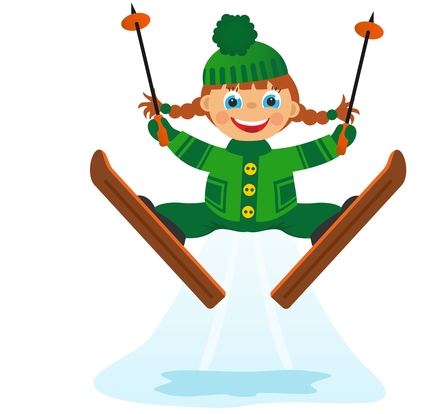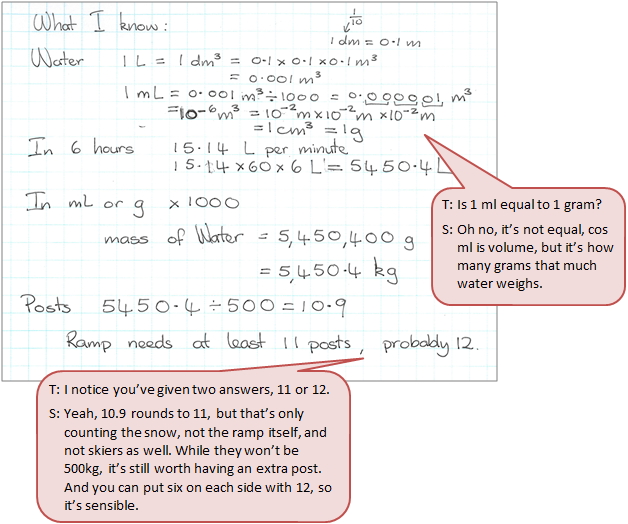The ski jump
The purpose of this activity is to engage students in converting metric units to solve a problem.
This activity assumes the students have experience in the following areas:
- Metric units of length (including prefixes)
- Calculation with decimals
- Conversion of measurements to different units
The problem is sufficiently open ended to allow the students freedom of choice in their approach. It may be scaffolded with guidance that leads to a solution, and/or the students might be given the opportunity to solve the problem independently.
The example responses at the end of the resource give an indication of the kind of response to expect from students who approach the problem in particular ways.

Task: The organisers of a winter festival are planning to construct a ramp to be used as a ski jump in the main street of town.
They are going to make snow with a machine that uses 4 gallons of water every minute (15.14 L per min) and can only function when the air temperature low enough. They estimate that they will have 6 hours of time overnight to make snow.
If the ramp is supported by posts that can hold up to 500 kg each, how many posts will be needed for the structure to safely hold the snow that will be made?
The following prompts illustrate how this activity can be structured around the phases of the Mathematics Investigation Cycle.
Make sense
Introduce the problem. Allow students time to read it and discuss in pairs or small groups.
- What do I think the problem is about? (Recognising the problem is about mass not volume of the snow.)
- Do I have all the information needed?
- Is there anything missing? (Volume to mass conversion for water.)
- What assumptions do I make? (Each pole shares the total mass equally.)
Plan approach
Discuss ideas about how to solve the problem. Emphasise that, in the planning phase, you want students to say how they would solve the problem, not to actually solve it.
- What are the maths skills I need to work this out? (Working with metric units for volume and mass, multiplication.)
- What could the solution be? What is a sensible estimate?
- What strategies can I use to get started? (Tables are useful ways to organise the calculations.)
- What tools (digital or physical) could help my investigation? (Calculator is helpful as the numbers are large or are decimals, depending on the units used.)
Take action
Allow students time to work through their strategy and find a solution to the problem.
- Have I shown my workings in a step-by-step way?
- How could I make sure that I haven’t missed anything?
- How do my results look different to others? Why could this be?
- Does my solution make sense? Does it match my estimation?
- Does my solution answer the question?
- Is there another possible answer or way to solve it?
Convince yourself and others
Allow students time to check their answers and then either have them pair share with other groups or ask for volunteers to share their solution with the class.
- What is the solution?
- Show and explain how you worked out your solution.
- Can others see how I worked it out? (Laying out calculations clearly is important with clear reference to meaning of each number and operation.)
- How does my solution answer the question?
- Could I answer the question more efficiently (Especially multiplication rather than repeated addition.)
Examples of work
Work sample 1
The student follows the steps given to solve a decimal word problem requiring conversion of metric units.
Click on the image to enlarge it. Click again to close.
Work sample 2
The student solves a decimal word problem requiring conversion of metric units.

